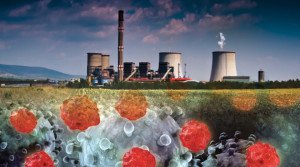Environmental toxins produced during industrial manufacturing
2 min read
Through industrialization, we have experienced booming economies, advancements in society and the advent of new technologies and products we use everyday. However, with this also comes pollution and environmental toxins, which pose serious health concerns for humans.
One significant discovery resulting from industrialization is the use of aluminum. While it is considered a miracle component that is cheap and easy to get, it can also be harmful and deadly. Just a few years after manufacturers started using aluminum in products, consumers began displaying symptoms of overexposure, which were sometimes fatal. As a result, the United States Government implemented a series of manufacturing guidelines to prevent such overexposure.
Through industrial manufacturing, there are several environmental toxins that are released the air. One of the most common is carbon monoxide. While manufacturing is not the only cause of carbon monoxide pollution, it does contribute a significant portion of it. Carbon monoxide is dangerous because it depletes the ozone layer, allowing ultra violet (UV) rays from the sun to hit the earth’s surface without filtration. Exposure to these unfiltered UV rays can lead to disorders such as cancer.
Other environmental toxins resulting from manufacturing processes include sulfur dioxide, chlorofluorocarbon and nitrogen oxide. Like carbon monoxide, these toxins also deplete the ozone layer and are major contributors to smog – smoke and fog in the air. Smog leads to poor visibility especially in winter and can cause cardiovascular diseases, asthma, throat and lung inflammation, and cancer.
In addition to air pollution, manufacturing processes can also result in water pollution. Many times, industrial plants are situated near water sources so they can draw water for their production processes. In most cases, these plants do not take much care beyond using the water, which results in the polluted water making its way back into the lake or river from where it came.
Over several years, environmental toxins can buildup in humans and can be extremely harmful. The effects on the body can vary, depending on the environment and level of toxic exposure.
So how do we prevent these environmental toxins from affecting our health? The first step is becoming aware of our level of exposure. While it’s often difficult to reduce exposure, especially for those that are geographically situated close to manufacturing plants, taking a few simple steps can prevent high level of exposure.
Here are several ideas to help get you started:
- Filter all drinking water
- Install a carbon monoxide detector on every level of your home
- Become a proactive consumer and purchase products that are packaged in environmentally-safe packaging
- Buy and consume unprocessed foods or organic foods, free of pesticides and antibiotics
- Get plenty of exercise to remain in healthy condition
- Take a hair analysis test to determine the level of toxins in your body






